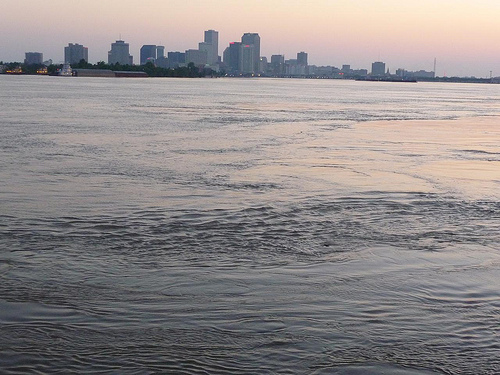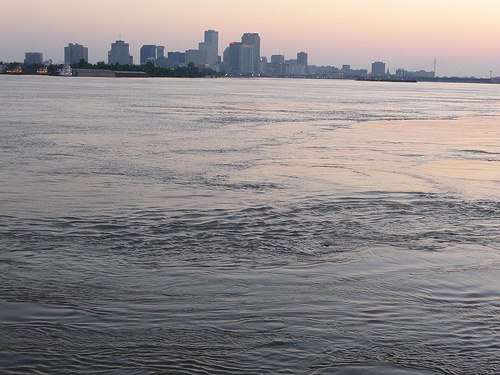 The Mississippi River on the rise.Photo: boxchainCross-posted from the Natural Resources Defense Council.
The Mississippi River on the rise.Photo: boxchainCross-posted from the Natural Resources Defense Council.
As The Washington Post reported today, people along the Mississippi River and its swollen tributaries are facing a very difficult decision: Should they flood the farms to save the cities?
That’s a tough spot to be in, and one we are more likely to face as a result of climate change, according to a report released today, “America’s Climate Choices,” by the National Research Council of the National Academy of Sciences.
The report states:
The impacts of climate change — on coasts, water resources, agriculture, ecosystems, transportation systems, and other human and natural systems — can generally be expected to intensify with warming.
That warming, the report says,
… is very likely caused by human activities, and poses significant risks for a broad range of human and natural systems. Each additional ton of greenhouse gases emitted commits us to further change and greater risks.
“America’s Climate Choices” was requested by Congress several years ago, as The New York Times reported today. Congress had asked for “action-oriented advice” on how the United States should be reacting to the potential consequences of climate change. The report’s advice:
The federal government should immediately undertake the development of a national adaptation strategy and build durable institutions to implement that strategy and improve it over time.
Though climate change science analyzes climate patterns over long periods of time — not any particular weather event — it can safely be said that today all weather is influenced by climate change.
“All extreme weather events are now subject to human influence,” said Peter Gleick, a climate and water scientist and the president of the Pacific Institute, at a Capitol Hill briefing on Monday organized by the American Meteorological Society (AMS). “We are loading the dice and painting higher numbers on them.”
As Miles Grant reported, Gleick told the AMS briefing that increasing temperatures aren’t necessarily leading to more frequent rainfall events, but they are leading to more intense rainfall events. He added that we’re seeing the same number of storms, but those storms are more likely to be the kind that cause severe flooding.
This is due in part to the fact that there is now about 4 percent more water vapor in the air than there was three decades ago. Heat-trapping gasses like CO2 allow moisture to build up in the air. Increased moisture — because of increased levels of CO2 — invigorates storms and leads to more inches of rain.
As a result of warming and higher sea-surface temperatures, storms — whether thunderstorms, snow storms, tropical cyclones, or the massive storm systems pounding the Mississippi basin — when supplied with increased moisture, produce more intense precipitation, increasing the risk of flooding.
That’s what’s been happening around the Mississippi River. Torrential rains over an extended period of time have caused the Big Muddy and some of the rivers that flow into it to hit record or near record levels, or crests. On Tuesday in Memphis, water levels came within inches of hitting the highest mark ever recorded, during the 1937 flood. The Army Corps of Engineers last week blew up almost two miles of levees causing the flooding of over 130,000 acres of farmland, in an effort to prevent more damage downriver.
As Grant points out, flooding like the Mississippi River is seeing in 2011 used to be considered extremely unusual, yet thanks to the climate crisis, floods are becoming more frequent and more severe over much of the Mississippi River basin.
Grant cites Hannibal, Mo., as an example. The record flood stage set there in 1993 exceeded the calculated level for a flood so much it’s only supposed to happen once every 500 years. In 2008, they had a flood so big it’s only supposed to happen once every 200 years. In 2001, Hannibal suffered a flood that’s only supposed to happen every 50-100 years. And in 1986 and 1996, the city experienced floods so bad they’re only supposed to happen every 25-50 years. In the same general time period, Hannibal experienced five floods that are only supposed to happen once every 10-25 years.
As today’s New York Times piece noted of “America’s Climate Choices”:
The nation’s scientific establishment issued a stark warning to the American public on Thursday: Not only is global warming real, but the effects are already becoming serious and the need has become “pressing” for a strong national policy to limit emissions of heat-trapping gases.



